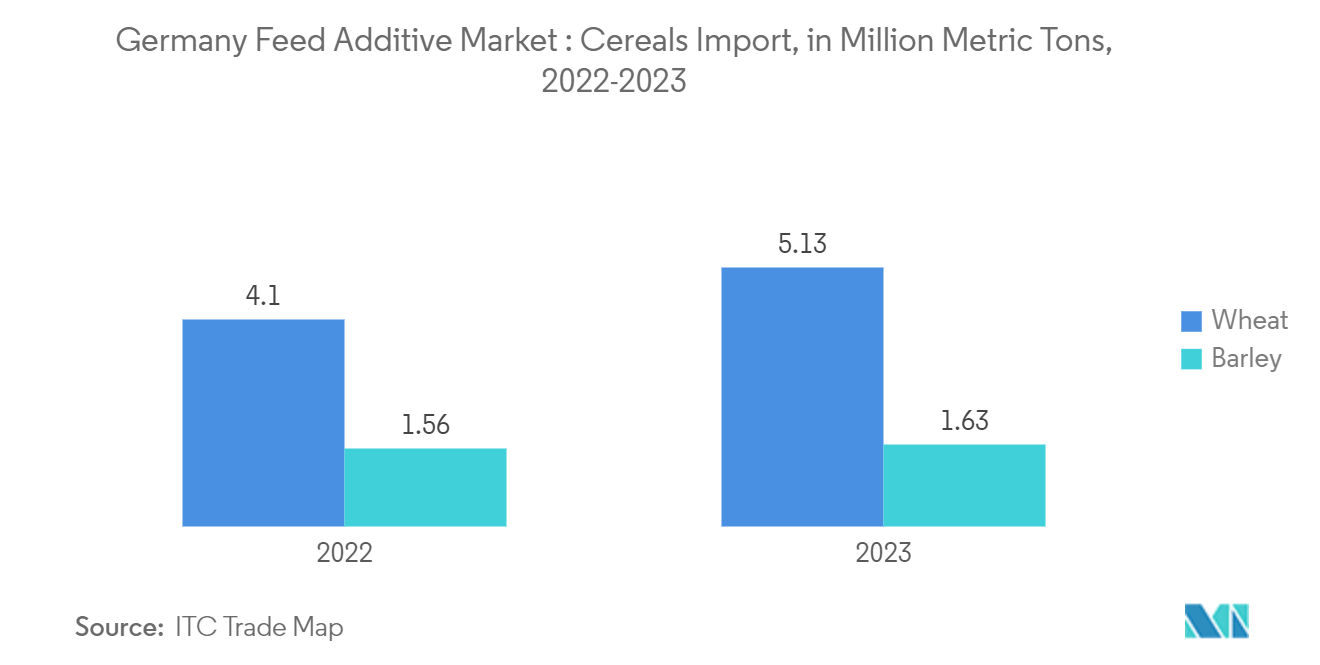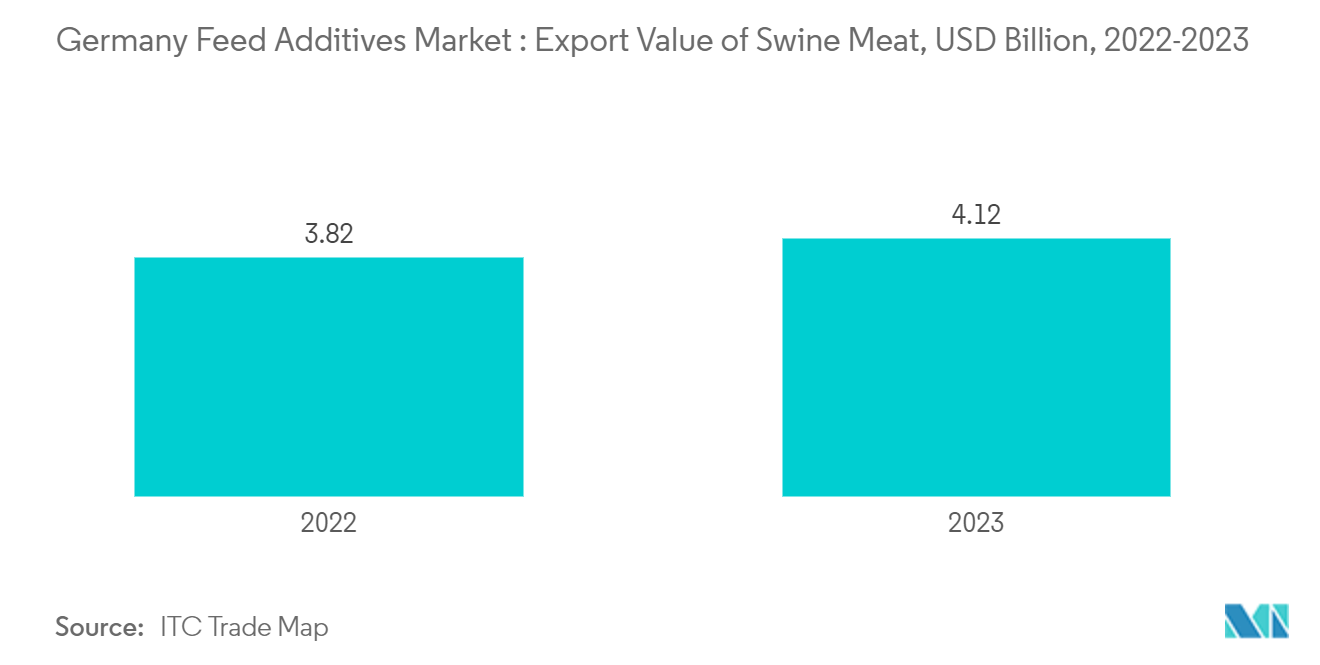Market Trends of Germany Feed Additives Industry
Growth in Compound Feed Industry
The expansion of the compound feed industry has become a significant driver for the German feed additives market, driven by the increasing demand for high-quality, nutritionally balanced animal feed. Germany, one of Europe's largest livestock producers, relies heavily on the compound feed sector to meet the dietary needs of its poultry, swine, and cattle populations. As the livestock industry grows, the compound feed sector has expanded correspondingly, creating a strong demand for feed additives that enhance feed efficiency, support animal health, and improve productivity.
Feed additives are essential components in compound feed production, offering solutions to optimize nutrient absorption and enhance animal growth. Additives such as amino acids, enzymes, probiotics, and vitamins are commonly incorporated into compound feeds to address specific nutritional requirements while reducing feed waste. In 2023, Phileo by Lesaffre introduced its Actisaf Sc 47 HR+ probiotic additive in the poultry sector, responding to the increased incidence of gut health diseases in poultry in Germany.
The increasing production and import of cereals and grains further boost compound feed production, as these are key components of compound feed. According to FAOSTAT, wheat production reached 22.6 million metric tons in 2022, a 5.3% increase from the previous year, while barley production rose to 11.2 million metric tons, a 7.7% increase. Similarly, cereal grain imports have grown, driving compound feed production. The ITC Trade Map reports that wheat imports increased to 5.1 million metric tons in 2023 from 4.1 million metric tons in 2022, while barley imports rose to 1.63 million metric tons in 2023 from 1.56 million metric tons in 2022.
The growing focus on customized and precision feeding solutions within the compound feed industry has also increased the demand for specialized feed additives. Manufacturers are developing compound feed formulations with targeted additives to meet the specific needs of various animal species and production stages. For example, ruminant feeds often include additives that improve fiber digestion, while poultry and swine feed frequently incorporate acidifiers and antioxidants to enhance gut health and immunity. This trend has significantly contributed to the growth of the feed additives market in Germany. As livestock farmers continue to prioritize feed quality and sustainability, the compound feed industry's expansion is anticipated to remain a key growth driver for Germany's feed additives market in the coming years.

Increasing Demand for High Value Animal Protein
The increasing demand for high-value animal protein is a primary factor driving the growth of the feed additives market in Germany. Consumers' growing health consciousness has led to a shift towards premium-quality meat, dairy, and poultry products. This trend has prompted livestock farmers to enhance animal productivity, health, and overall quality, resulting in greater use of feed additives. These additives are crucial for improving feed efficiency, promoting growth, and ensuring the nutritional quality of animal-derived products. Eurostat data shows that poultry meat production in Germany increased from 1.5 million metric tons in 2022 to 1.6 million metric tons in 2023.
Germany's strong meat and dairy sectors, particularly its swine, poultry, and dairy industries, are meeting this high-protein demand. To satisfy consumer preferences, livestock farmers are implementing advanced feed formulations enriched with additives. These solutions ensure the production of high-quality animal protein that meets strict food safety standards and consumer expectations. The growth in animal production has led to increased meat consumption in the country. Eurostat reports that per capita poultry meat consumption rose from 18.5 kg in 2022 to 19.9 kg in 2023.
Furthermore, Germany's export-oriented meat and dairy industries necessitate the use of feed additives to maintain competitive quality standards in the global market. Countries importing German animal products demand high levels of food safety, requiring advanced feed solutions. According to the ITC Trade Map, the export value of swine meat increased from USD 3.82 billion in 2022 to USD 4.12 billion in 2023. The integration of feed additives into precision feeding programs has allowed livestock producers to maintain superior quality while optimizing costs and resource utilization. Advancements in additive formulations and adopting sustainable farming practices will further enhance high-value animal protein production, reinforcing the importance of feed additives in the agricultural sector. Consequently, the growing consumer demand for nutrient-rich animal protein is anticipated to continue driving the growth of the German feed additives market in the coming years.


